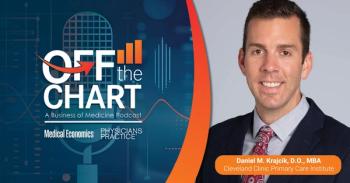
On employers and AI: How financial power and computing power could affect value in health care
Key Takeaways
- Employers' cost-containment strategies, such as increasing premiums and deductibles, have been largely ineffective and may reduce overall health care utilization.
- AI's potential in health care lies in administrative efficiency, but its impact on care value and unintended consequences must be carefully evaluated.
Analyst Trilliant Health argues the case for major changes from inside — or new regulations from outside.
Employers pay for worker health care benefits and their spending adds up to a large part of the U.S. health care economy.
What might happen if they started changing incentives for workers to use health care? Or, for all that money spent, what if they started demanding greater value when physicians, other clinicians, hospitals, health systems and insurers coordinate care?
That might lead to major change in the U.S. health care system, and it’s not the only driver of change. Artificial intelligence (AI) also has taken root in health care and is expected to grow in usage and in uses.
The new Trilliant Health report,
Trilliant Health Vice President Chief Research Officer Allison Oakes, PhD, spoke with Medical Economics about the findings across six trends and what those indicate in the continuing evolution of health care.
This transcript has been edited for length and clarity.
Medical Economics: The report does note that some of those employer strategies to contain health care costs have been ineffective. Why is that?
Allison Oakes, PhD: Unfortunately, we feel a lot of the employer strategies to date have been a bit misguided. Unfortunately, I think a lot of the strategies that we've seen employers Implement over time have largely just been focused on cost-sharing or cost-shifting, and that's really come in the form of ever-increasing premiums for employees. Also, this trend of increasing deductibles. And unfortunately, going back all the way to the 1980s and the original Rand health insurance experiment we see that cost-sharing — when people need to be paying out of pocket for their medical care — we see that it reduces utilization. The thing we always hoped for, is that by people having skin in the game, that they would somehow figure out how to reduce low-value care and increase their high-value utilization. But instead we see that the cost sharing issue or cost shifting issue is a pretty blunt instrument, and instead people of reduce their health care utilization altogether. So historically, the primary strategy of employers trying to incentivize high-value care has been increasing deductibles. We've seen that to be pretty ineffective and honestly, potentially detrimental, I think, to patterns of health care utilization that we've seen. Using some secondary data, in terms of what employers are suggesting they might do in 2025, we see almost half of employers suggesting they'll implement wellness programs. The effectiveness of those, I think, is mixed and can be called into question. We also see about half, suggesting that they'll just increase employee premium contributions. Unfortunately, I don't think any of those things are going to bend the cost curve in the United States or improve health care outcomes.
So moving forward, what we're really hoping is that employers begin to understand the value of this new health plan price transparency data and start holding different stakeholders — their health insurance brokers — holding their feet to the fire, and starting to ask the tough questions. We can now more or less understand the value of every single provider in the United States, and I think that's what we're going to have to do in order to start moving the needle both on spending in this country, but also in terms of the health outcomes that we see.
Related coverage:
Medical Economics: That is a real pocketbook issue for employers and employees.
Allison Oakes, PhD: I want to say that since 2009, we've seen almost a 90% increase in premiums. We certainly have not seen a 90% increase in health outcomes in this country. The way spending just continues to go up as health outcomes lag and in many ways continue to get worse — it just doesn't add up. But I mean a market with proprietary prices is doomed to fail. That's something that we've been saying and unpack in our
Medical Economics: What about artificial intelligence (AI) and what that return on investment is showing so far? Can you make some predictions about how AI could make the biggest difference in finding solutions to some of the problems that the report indicates?
Allison Oakes, PhD: Health care is a huge testing ground and proofing ground for AI at this point in time. In terms of where we see AI potentially making the largest difference today, we think AI is probably most applicable to the very repetitive administrative related tasks, which do create a significant burden on providers and nurses. So I think there is a question of what administrative efficiency gains there are to be made by implementing different AI solutions.
The most important thing, however, is that we maintain the principle of rapid evaluation and experimentation as it relates to the implementation of AI across the health care sector. There are all kinds of tools and interventions that we implement that cost more money and don't generate commensurate savings. Even worse, there are plenty of things that we try, and they actually perhaps lead to worse health outcomes or have all sorts of different unintended consequences. So the one thing that we're really focused on and are preaching is the importance of, if you are going to implement a new AI-based procedure within a health system, or even on the payer side, it's really important to be measuring the effectiveness of that and looking for unintended consequences and understanding, is it really improving the health care system? Or is this just something else that's going to increase spending without increasing care value? So, we think we need to look at that with the really close eye and need to make sure that we’re implementing things carefully and that we're being judicious and measuring the effectiveness of these new interventions and technologies.
I'll also add something, that we're watching unfold, I think, a little bit of an AI battle between different stakeholders, on the provider side and the payer side. Of course, historically, there's been a lot of conversation around risk adjustment on the MA (Medicare Advantage) side and the extent to which AI can be used to increase patient acuity. We’re now seeing that catch up on the provider side a little bit, so something we look at are the use of different E/M (evaluation and management) codes and the intensity of those E/M codes. And in 2023, we do see the obvious jump and higher intensity E/M codes being billed. So this begs the question, well, did all of this care really become more intense? Or is this just potentially use of things like AI scribes, which allow providers to be coding visits as more intensely than they did previously? Taking a step back, though, if doctors are providing the exact same care that they were previously, but are able to bill for it with a more intense code and generate more revenue, it's really the same health care being provided at a higher cost, which is not really indicative of better value for the health care system. So, I think how this all plays out is something that we need to keep a close eye on, again, always keeping in mind this question of, how can we be increasing care value for patients? But also for us, as a society as a whole, as we spend about 18% of our GDP on this thing.
Medical Economics: What did I not ask about that you would like our audience to know?
Allison Oakes, PhD: Well, taking a step back, our underlying motivations, at Trilliant Health, we understand that the health economy is something that impacts every single American and our goal is to try and help make it better. Another unfortunate trend that we uncovered throughout the whole report is that, in a lot of ways, the health of the American public is getting worse. We see this as it relates to different trends related to mortality, even in the younger population, so, those aged 18 to 44, we see all sorts of chronic conditions increasing and prevalence. We also look at some newer chronic conditions, so things like POTS (postural orthostatic tachycardia syndrome), different digestive issues that folks are having. Again, we spend about 18% of our GDP on the health economy. We spend more than any other country in the world, and yet have health outcomes and life expectancy that lags behind those peers. So we really think there's a value issue within our health care system, and it's something we need to figure out how to solve. We owe it to the country. And we do really hope that this health plan price transparency data can be the catalyst for that. As I said, it finally allows us to understand care value. We can put together the pieces of price and quality. So that's something that we're focused on and are going to continue to keep an eye on. And we hope again that employers, as such an important, important stakeholder in the health economy, they're able to start leveraging that data to ask the hard questions and hopefully start to implement some change.
Newsletter
Stay informed and empowered with Medical Economics enewsletter, delivering expert insights, financial strategies, practice management tips and technology trends — tailored for today’s physicians.















